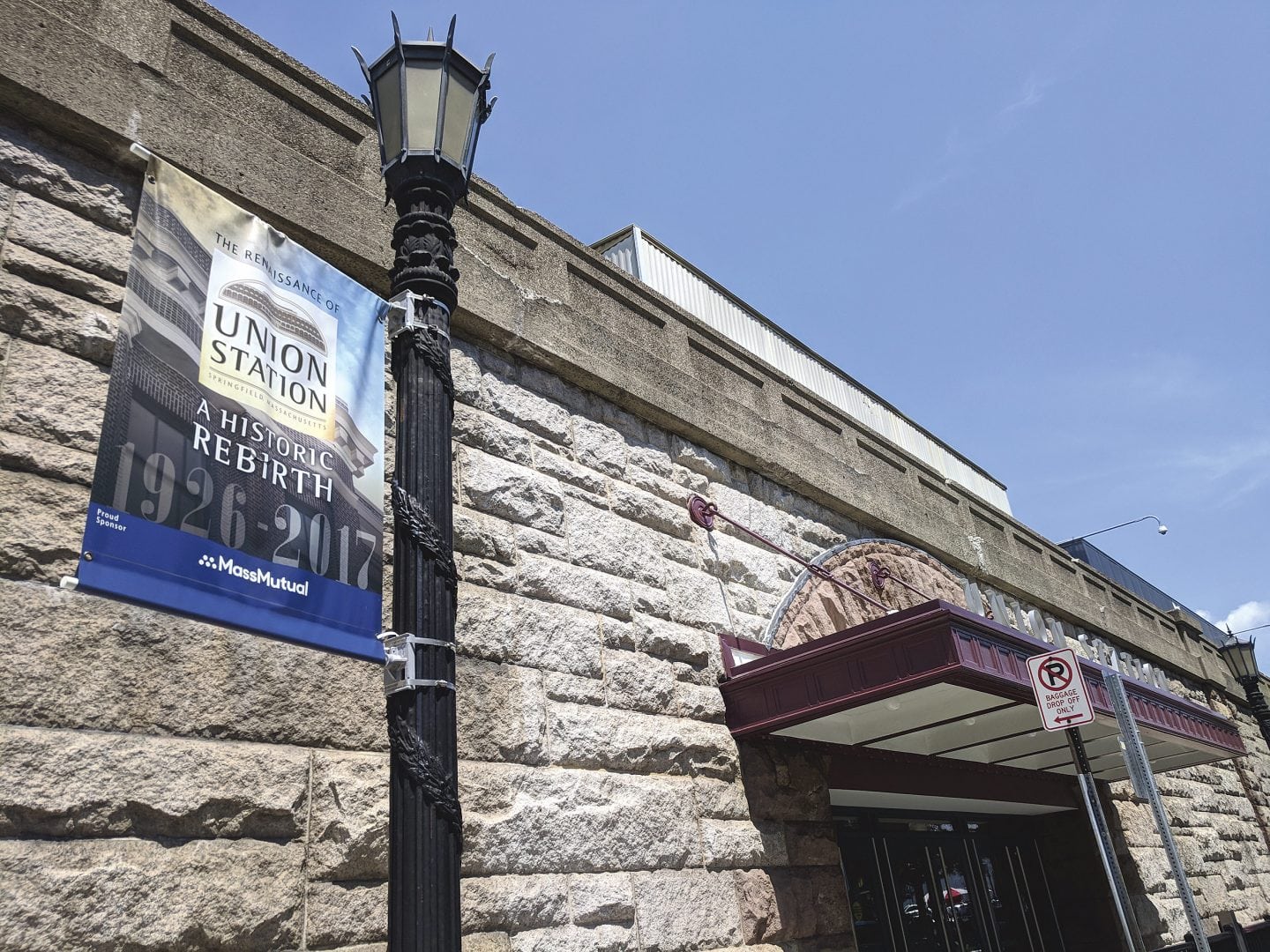All Aboard
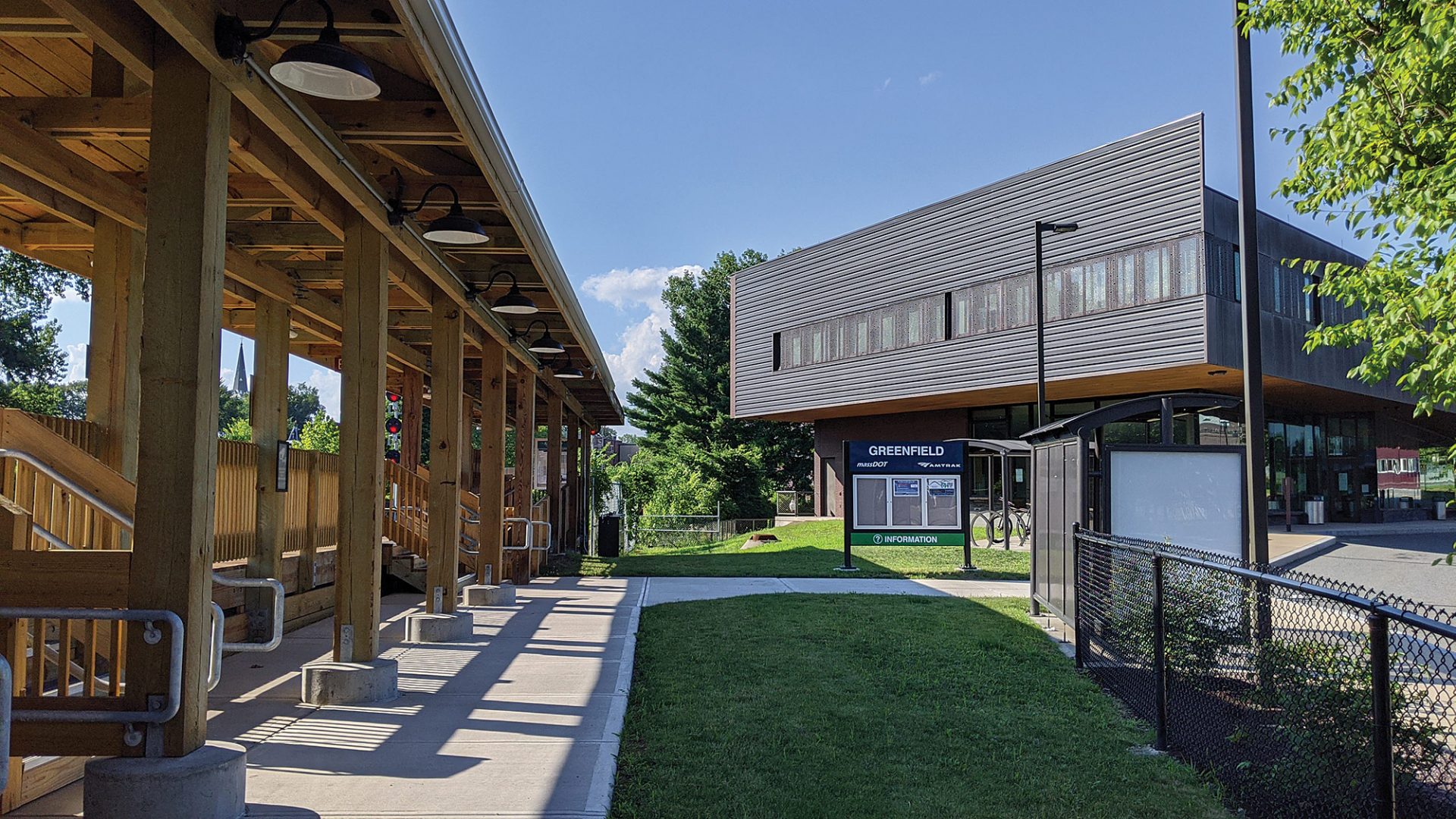
The Greenfield Amtrak stop will be busier this month with the restoration of Vermonter service and a second Valley Flyer train. Photo courtesy of Trains In The Valley
While a proposed east-west rail line between Pittsfield and Boston has gotten most of the train-related press recently, another proposal, to incorporate passenger rail service on existing freight lines between North Adams and Boston, has gained considerable momentum, with a comprehensive, 18-month study on the issue set to launch. Not only would it return a service that thrived decades ago, proponents say, but expanded rail in the so-called Northern Tier Corridor could prove to be a huge economic boost to Franklin County — and the families who live there.
State Sen. Jo Comerford has spoken with plenty of people who remember taking a train from Greenfield to North Station in Boston to catch Bill Russell’s Celtics.
They stepped on at 2:55 p.m. — one of as many as 12 boardings on any given weekday — and the train was already half-full after stops in Troy, N.Y., North Adams, and Shelburne Falls. Then they’d arrive at North Station at 5:15, “and you’d still have time for dinner before the game started,” Comerford said. “That was our reality in Franklin County in the 1950s.”
She shared those words last week at a virtual community meeting to discuss a comprehensive study, soon to get underway, of passenger rail service along the Northern Tier Corridor, a route from North Adams to Boston via Greenfield, Fitchburg, and other stops.
Ben Heckscher would love to see expanded train service in Western Mass.; as the co-creator of the advocacy organization Trains In The Valley, he’s a strong proponent of existing lines like Amtrak’s Vermonter and Valley Flyer, north-south lines that stop in Greenfield, as well as more ambitious proposals for east-west rail, connecting Pittsfield and Boston along the southern half of the state and North Adams and Boston up north.
Like Comerford, he drew on the sports world as he spoke to BusinessWest, noting that travelers at Union Station in Springfield can order up a ticket that takes them, with a couple of transfers, right to the gates of Yankee Stadium in the Bronx. “But there’s no button to push for the Red Sox,” Heckscher said. “It seems funny — we’re in Western Mass., and you can take a train to see the Yankees, but you can’t get to Fenway.”
But sporting events aren’t highest on his list of rail benefits. Those spots are dedicated to the positive environmental impact of keeping cars off the road, mobility for people who don’t own cars or can’t drive, and the overall economic impact of trains on communities and the people who live and work in them.
People want to access rail for all kinds of reasons, Heckscher said, from commuting to work to enjoying leisure time in places like New York, Philadelphia, and Washington without having to deal with navigating an unfamiliar city and paying for parking. Then there are medical appointments — many families living in Western Mass. have to get to Boston hospitals regularly, and don’t want to deal with the Mass Pike or Route 2 to get there.
“People are just really tired of driving Route 2 to Boston, especially at night or in the winter, and they want another way back and forth,” he said. “So they’re going to do a really robust study, and we’ll see what comes of that.”
In addition, as the average age of the population ticks upward, many older people might want to travel but be loath to drive long distances. In fact, that kind of travel is increasingly appealing to all age groups, Heckscher added. “You can ride the train, open your computer, take a nap. You can’t do that operating a car — at least not yet. So, rail definitely has the potential to become even more important.”
State Rep. Natalie Blais agrees. “We know the residents of Central and Western Mass. are hungry for expanded rail service. That is clear,” she said at last week’s virtual meeting. “We are hungry for rail because we know these connections can positively impact our communities with the possibilities for jobs, expansion of tourism, and the real revitalization of local economies.”
Ben Heckscher
“People are just really tired of driving Route 2 to Boston, especially at night or in the winter, and they want another way back and forth.”
Makaela Niles, project manager for the Northern Tier study at the Massachusetts Department of Transportation, said the 18-month study will evaluate the viability and potential benefits of rail service between North Adams, Greenfield, and Boston.
The process will document past efforts, incorporate market analysis (of demographics, land use, and current and future predicted travel needs), explore costs and alternatives, and recommend next steps. Public participation will be critical, through roughly seven public meetings, most of them with a yet-to-be-established working group and a few focused on input from the public. A website will also be created to track the study’s progress.
“We know it’s critical that we have stakeholders buying in,” said Maureen Mullaney, a program manager with the Franklin Regional Council of Governments. “We look forward to having a very robust, inclusive participation process.”
Making Connections
Comerford has proposed rail service along Route 2 as a means for people living in the western counties along the corridor to more easily travel to the Greater Boston region, and a means for people living in the Boston area to more easily access destinations in Berkshire, Franklin, and Worcester counties. In addition to direct service along the Northern Tier, the service could provide connecting service via Greenfield to southern New Hampshire and Vermont.
The service would operate over two segments of an existing rail corridor. The first segment, between North Adams and Fitchburg, is owned by Pan Am Southern LLC. The second segment, between Fitchburg and Boston North Station, is owned by the Massachusetts Bay Transportation Authority (MBTA). Any new service would be designed so that it does not negatively impact the existing MBTA Fitchburg Line commuter rail service or the existing freight rail service along the entire corridor.
State Sen. Jamie Eldridge asked Niles at last week’s meeting about potential tension between freight and passenger interests and whether commuter times will be thrown off by the needs of freight carriers.
“We’ll be looking at how those two intersect and make sure any additional service that could occur along the corridor doesn’t impact with freight or current commuter operations along the corridor,” Niles responded. “We’ll look at how all the services communicate and work together.”
Other potential study topics range from development of multi-modal connections with local bus routes and other services to an extension of passenger rail service past North Adams into Adams and even as far as Albany, although that would take coordination with officials in New York.
“My hope is that these communities would suddenly become destination spots for a whole new market of people looking to live in Western Massachusetts and work in Boston.”
Comerford first introduced the bill creating the study back in January 2019, and an amendment funding it was included in the state’s 2020 budget, but the COVID-19 pandemic delayed the start of the study until now.
And it’s not a moment too soon, she recently said on the Train Time podcast presented by Barrington Institute, noting that rail service brings benefits ranging from climate effects to economic development to impact on individual families who want to live in Franklin County but work in Boston (see related story on page 39).
With average salaries lower than those available in Boston often making it difficult to settle in Franklin County, availability of rail affects people’s job prospects and quality of life, she noted.
“My hope is that these communities would suddenly become destination spots for a whole new market of people looking to live in Western Massachusetts and work in Boston,” Comerford said, noting that, longer-term, she hopes to see greater business development in Western Mass. due to expanded rail, as businesses that need access to Boston, Hartford, and New York could set up shop here and access those cities without having to deal with traffic.
The bottom line, she said, is that it’s environmentally important to get cars off the road, but there are currently too many gaps in public transportation to make that a reality.
“There was a time when you could work in Boston and live in Franklin County,” she said. “I’ve heard story after story about what life was like up until about the late ’60s. It changed abruptly for them.
“When I was elected, one of the first things I researched was passenger rail along Route 2,” she went on. “I thought, ‘we have to explore starting this again. This is really important.’”
Chugging Along
Of course, east-west rail is only part of the story right now in Western Mass. Running north-south between New Haven and Greenfield are Amtrak’s Valley Flyer and Vermonter lines.
On July 26, Amtrak will restore a second train to its daily Valley Flyer service 16 months after cutting a train due to COVID-19. Southbound trains will depart Greenfield at 5:45 a.m. and 7:35 a.m., and northbound trains will return to the station at 10:23 p.m. and 12:38 a.m.
The Vermonter will return to service in Massachusetts on July 19. A long-distance train originating in Washington, D.C., it has gone no further north than New Haven since March 2020, also due to the pandemic. Amtrak is also reopening three other trains which offer service between New Haven and Springfield.
According to Amtrak, ridership on the Valley Flyer fell by more than half at the Holyoke, Northampton, and Greenfield stations in 2020, but the company is optimistic it will return to past numbers. That’s critical, since the Flyer is part of a DOT and Amtrak pilot program, which means its funding depends on its ridership. The Pioneer Valley Planning Commission (PVPC) will launch an advertising campaign this fall in an effort to boost interest in the service.
“The pandemic really tanked ridership — all forms of public transportation, actually,” said Heckscher, noting that most travelers felt much safer in their cars last year than among groups of people. “But since the vaccine came out, there’s been a comeback in ridership in the Valley Flyer service.”
MJ Adams, Greenfield’s director of Community and Economic Development, said the city has been waiting a long time for the Valley Flyer, “and we don’t want to be just a pilot.”
She feels the city, and the region, will benefit from a perception that people can get anywhere from the Greenfield area, and they may be more willing to move there while continuing to work in the city. Many of those are people who grew up in Franklin County and have a connection to it but still want to feel like they can easily get to work far away or enjoy a day trip without the hassle of traffic or parking.
There’s an economic-development factor related to tourism as well, Adams said. “People in New York City, Hartford, or New Haven can spend the day up here in the country — it’s not just us going down to New York, but people from New York who get on a train, enjoy a nice stay in rural Massachusetts, have a blast, and get back on the train to go home. It’s a two-way street.”
A recent report commissioned by Connecticut’s Capitol Region Council of Governments (CRCOG), in consultation with the PVPC, reinforced the idea of rail as an economic driver, finding a nearly 10-to-1 return on investments in passenger rail between New Haven and Worcester via the Hartford-Springfield metro area.
“In so many ways, the findings of this study confirm what we have seen with our own eyes for decades here in the Valley — regions connected by rail to the major economic hubs of Boston and New York City are thriving, while underserved communities like ours have lagged behind,” PVPC Executive Director Kimberly Robinson said. “We now know what the lack of rail has cost us economically, and this trend cannot continue further into the 21st century.”
Though she was speaking mainly of proposed routes along the state’s southern corridor, Heckscher believes in the economic benefits — and other benefits — of numerous projects being discussed across Massachusetts, including along Route 2.
“With rail, everyone has the ability to travel long distances,” he said — and the impact, while still uncertain in the details, could prove too promising to ignore.
Joseph Bednar can be reached at [email protected]









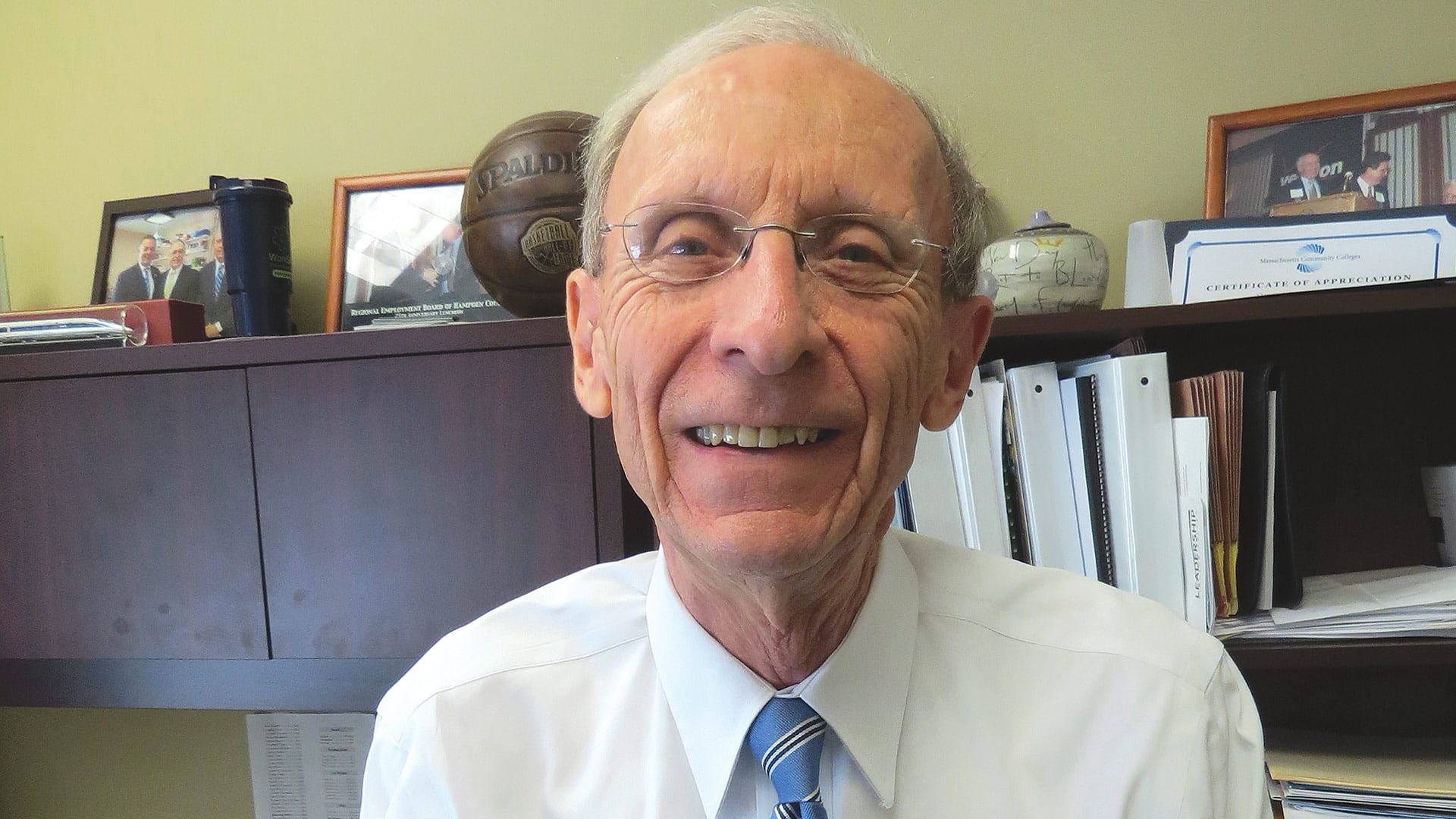
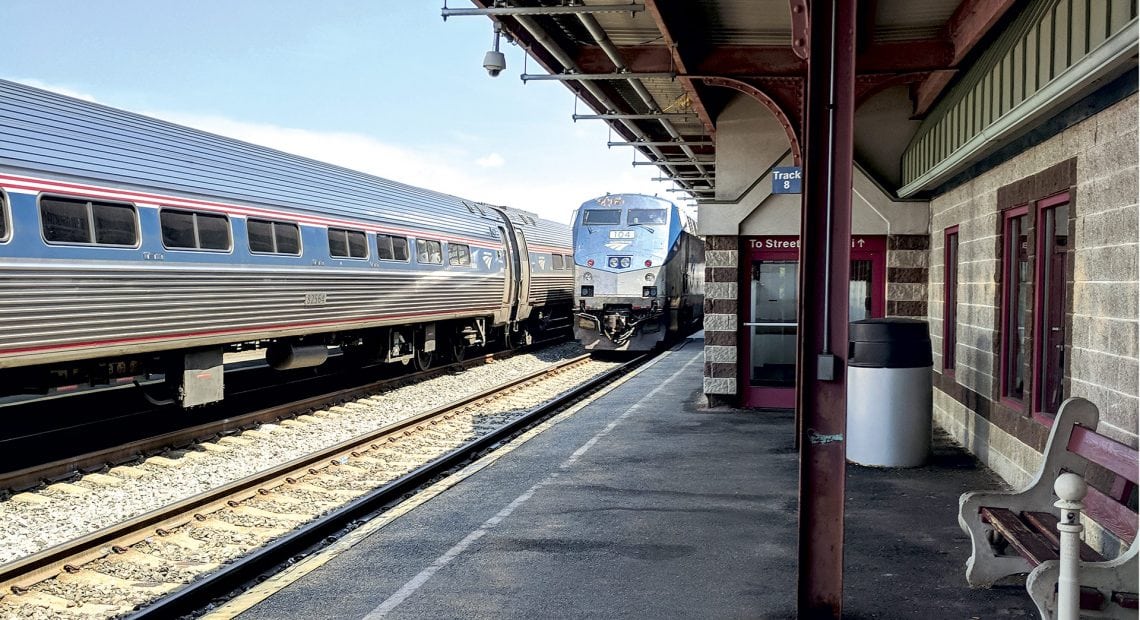
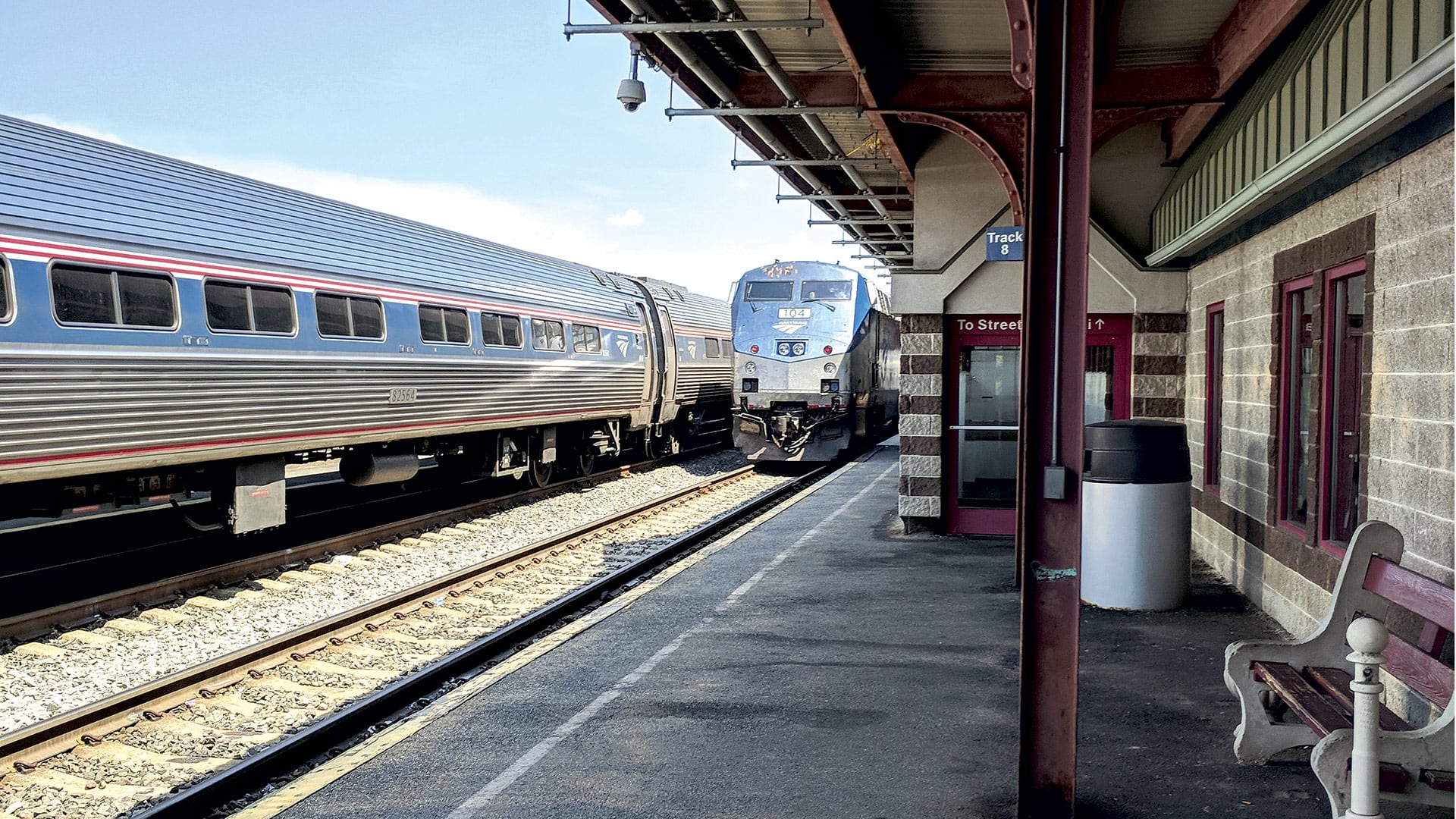 The launch of the Hartford line last month, which expands rail activity from
The launch of the Hartford line last month, which expands rail activity from 